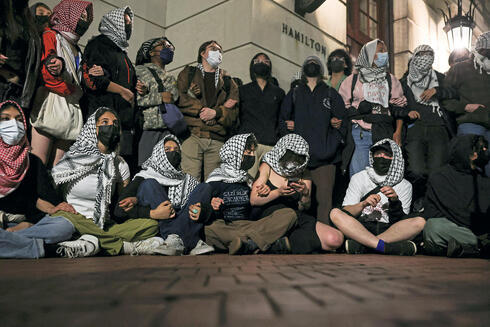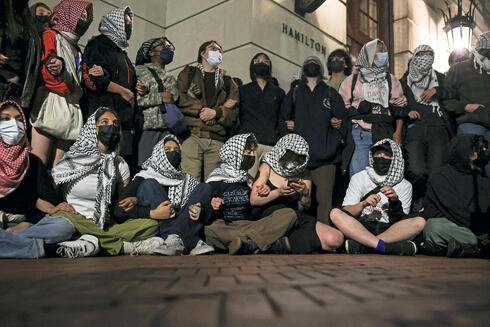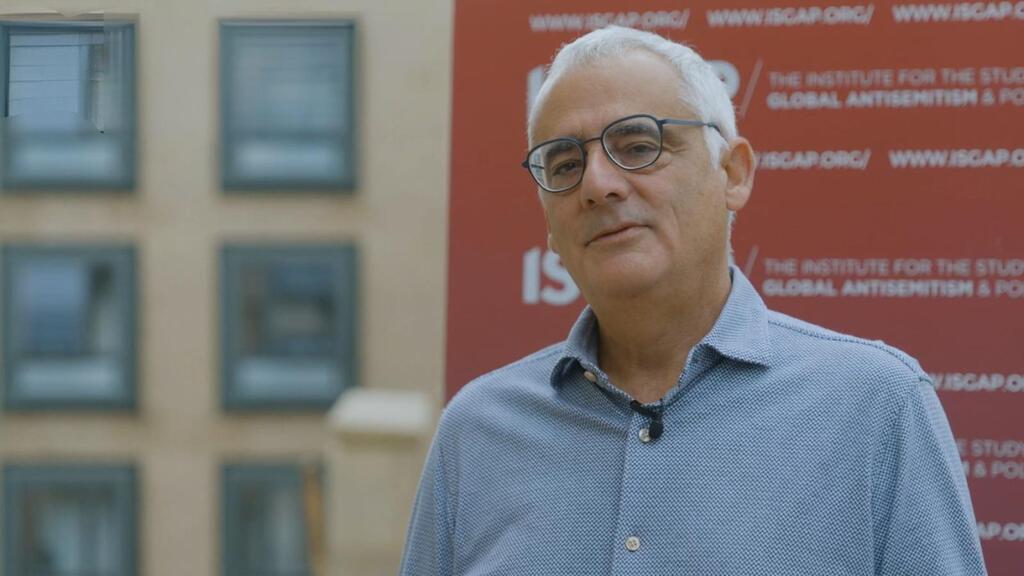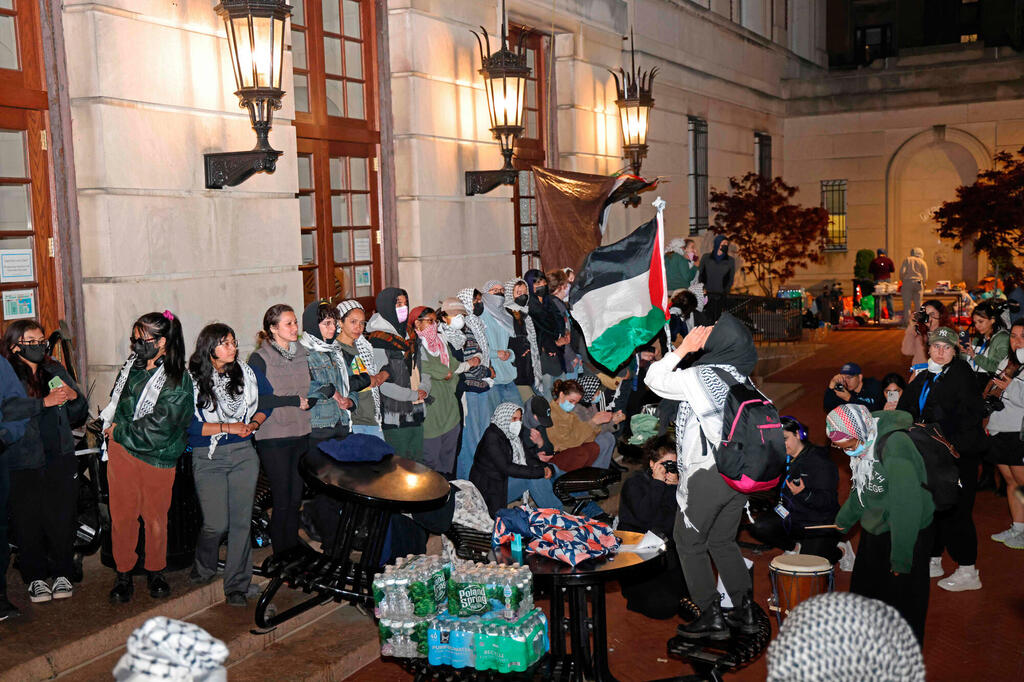
How Muslim Brotherhood ideology and cash gained a foothold in Western universities
The anti-Israel protest movement that engulfed Western universities this past year were highly organized, funded and ideologically driven by Hamas and Muslim Brotherhood linked organizations, according to a new report by the Institute for the Study of Global Antisemitism and Policy (ISGAP). ISGAP President Charles A. Small spoke to CTech about his concerns regarding foreign interference and the indoctrination of students.
The last year at North American universities was characterized by widespread campus protests against Israel, culminating in encampments and arrests of over 2,000 students. According to a recent report published by the Institute for the Study of Global Antisemitism and Policy (ISGAP), the main organizations behind the protests, Students for Justice in Palestine (SJP) and its umbrella organization, the National Students for Justice in Palestine (NSJP), and Jewish Voice for Peace (JVP), have been funded by organizations linked to Hamas.
The ISGAP report, entitled “National Students for Justice in Palestine (NSJP): Antisemitism, Anti-Americanism, Violent Extremism and the Threat to American Universities” dives into the origins, ideology, and funding of SJP, and highlights several non-profit organizations supporting SJP which have been linked to Hamas including WESPAC, Tides, American Muslims for Palestine (AMP), Americans for Justice in Palestine (AJP). The report alleges that NSJP and SJP have ties to terrorist organizations including Hamas and the Muslim Brotherhood (Hamas’ mother organization), that they receive millions of dollars in financial support via non-transparent channels to fund their activities, and that SJP’s ideology and actions are steeped in illiberal and antisemitic ideology.
The report is part of a larger project on funding of North American universities started by ISGAP in 2012, with an earlier version of this report published in 2020. “Given the explosion of antisemitism especially after October 7, we wanted to revisit it,” says Charles A. Small, the Founding Director and President of ISGAP. “We’ve been working intensely on it for the last six months.”
Small says that one of the main takeaways from the report is that American Muslims for Palestine (AMP) is directly funding SJP and JVP. “AMP is directly connected to the Muslim Brotherhood - the old guard of the Holy Land Foundation created AMP. This is proof that the Muslim Brotherhood is funding SJP and JVP,” says Small.
The Holy Land Foundation for Relief and Development (HLF) was one of several U.S.-based organizations which were found to be funding Hamas. The U.S. government designated the groups as terrorist organizations in 2001 upon which they were closed and their assets seized. The HLF and five of its leaders were later convicted of financing terrorism in 2008. AMP was founded in 2006 by previous members of the HLF and SJP co-founder Hatem Bazian.
Bazian founded SJP in 2001 at UC Berkeley as an offshoot of the General Union of Palestinian Students (GUPS) formed in Cairo in 1959 by the Muslim Brotherhood. “JVP and SJP are connected to the Muslim Brotherhood which is committed to eradicating Israel and democracy. This isn’t an extremist branch - it's a core element of the Muslim Brotherhood,” says Small.
The report not only challenges the notion that the goals and ideology of the campus protest are nonviolent, but that they are grassroots; on the contrary they are highly organized. Muslim Brotherhood ideology has found a foothold among Western academia by cloaking itself in progressive language, Small says. “[SJP] speaks the language of progressive post-modernism to appeal to naïve kids on campus. That people in the West, in 2024, perceive this as progressive and just is terrifying, and that students are receiving funding from these movements is astounding. This is a student organization parading themselves as progressive, when they are really rooted in Islamism, fascism and European-style antisemitism.”
When students chanted ‘we are Hamas,’ as they did at the University of Pennsylvania and at Columbia University among others, Small says that “it's no accident that SJP says that. This is completely consistent with the worldview of the Muslim brotherhood, AMP and SJP. SJP are like the shock troops for the Muslim Brotherhood. Ideologically they’re part of the same social movement.”
Small says that all of the data published in the report was collected by ISGAP scholars and researchers including, experts on the Muslim Brotherhood and political Islam, experts in terror financing and forensic accountants, and antisemitism. All of the data published was open source information, available to the public and notes that universities themselves have been highly aware of these issues for a long time.
A creeping radicalization
Before completing his PhD at Oxford University and embarking on a career in academia, Small was an activist himself as an undergraduate student at McGill University in Montreal - one of the epicenters of anti-Israel activity on Canadian campuses in recent decades. He says that the behavior and tactics of today’s protest movement are unique. “I was the chairperson of the African National Congress solidarity committee at Mcgill (in the fight against South African apartheid), I did a lot of work on indigenous issues, and campaigned for Soviet Jewry. I’ve spoken with many colleagues at various institutions and we’ve never seen this kind of cultural protest taking place: there’s an element of secrecy, it's highly organized, tightly controlled access to the media, self-defense classes, prohibiting other students from accessing campuses.”
Many were shocked by the violence that emerged at many protests, including harassment of Jewish students, as well as the strict enforcement of draconian measures to prevent participants from engaging with the media and to prevent outsiders, including Jewish students or anyone who did not pass stated “requirements,” to enter the encampments. After the Columbia encampment was dismantled, NYPD officers found documents entitled “Tools for Agitators” and “Terrorism,” as well as a pamphlet calling people “from New York to Gaza and across the Turtle Island” — the Indigenous name for North America — to “disrupt/reclaim/destroy [Z]ionist business interests everywhere.” These and other pamphlets were found alongside gas masks, helmets, tape, hammers, knives, ropes etc. The NYPD Deputy Commissioner Kaz Daughtry wrote on X, formerly Twitter that: “These are not the tools of students protesting, these are the tools of agitators, of people who were working on something nefarious.”
The protests received praise from the likes of Iranian leader Ayatollah Ali Khomeini who wrote wrote an open letter to US university students, saying that they have “now formed a branch of the Resistance Front,” joining the ranks of Hezbollah, Hamas, the Houthis and other Iranian proxies, “which shares the same understandings and feelings that you have today, has been engaged in the same struggle for many years in a place far from you.”
“I’m very concerned about the indoctrination of students by SJP with Muslim Brotherhood ideology. Young students are being radicalized, and one wonders at what point it will turn into violence and terror. This needs to be of great concern to law enforcement across North America,” says Small. “It should also be of concern to all of us who care about democratic principles. This is an anti-democratic reactionary social movement, promoting an ideology that wants to destroy Israel and murder Jews, and dismantle the United States. It's also a highly anti-progressive, misogynist and homophobic social movement.”
Small refers to this as a “dual assault” of sorts on American academia by radical Islamist forces and the post-modernists of the radical left. “Post-modern thought and post-colonial theory are being used to justify violent resistance including sexual violence. I’ve heard from gender studies professors at Columbia that even violence that was carried out against women [on October 7th] was justified because it was a way to end the occupation, and that it was in response to the occupation.”
He says that the infamous congressional hearing in which the presidents of Harvard, MIT and Penn were unable to unequivocally condemn calls for genocide against Jews on their campuses, is indicative of how entrenched this ideology is. “The fact that you had three presidents at the pinnacles of their career - and they seemed like good people, they didn’t seem inherently hateful or disparaging of anyone - who could not bring themselves to unequivocally condemn their colleagues for calling for the extermination of members of their own community, indicates the intellectual environment that universities are functioning in.”
Small, who at the time of this interview was in Washington to give testimony to Congress and was consulted by the congressional committees before the hearings, senses that there is a growing sense of fatigue and impatience among legislators for the behavior of these student movements. “People have had enough. There are laws against this behavior. Under Title 6, [universities] are getting federal funding. Any recipient who gets it and engages in terrorist incitement or against the Civil Rights Act will lose their federal funding. A lot of these universities receive their funding from the federal government and there are many lawsuits emerging. The fact that Jewish students and faculty feel unsafe is against the law,” says Small.
“You have students, some professors and outside agitators openly discriminating against members of their university and openly calling for the murder of Jewish people. There is going to be a reckoning.”


















